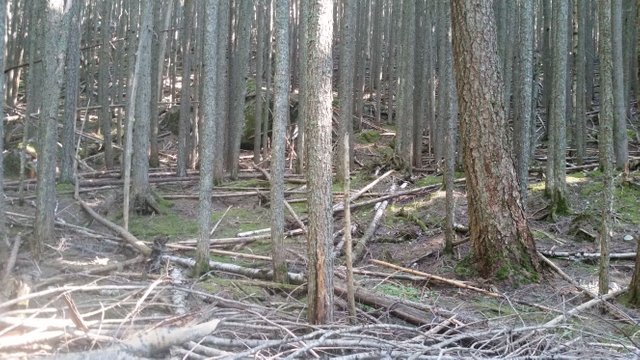
Reestablishing Natural Practices in Woodlands
Untouched woodlands are composed of inhabitants quite different from extracted parks and state lands. One of the biggest qualitative differences between a wild forest and a heavily forested park is the presence of fallen trees. Many city and state parks remove these trees as hazards, however the organic materials that eventually decay into the ground are actually vital for soil and forest health. This is an example of a park that uses forest management practices of leaving the downed trees to decay in their natural habitat, rather than removing them for lumber or safety reasons.
Positive Effects of Undisturbed Natural Settings
Without the presence of humans to remove resources from forests, these landscape increases in complexity and available habitat for other animals. The lignin and other constituent compounds found in decaying trees provide food for mosses, fungi, and insects, as well as habitat for small mammals and insects. As these downed trees decay through rain, wind and heat, fallen trees provide beneficial nutrients to the ecosystem. As a result, a fertile structure through which new trees can flourish emerges. As a larger old tree decays, in its latest stages you can often see deep red crumbling debris covered in moss and often the starts to a great many new trees. Without these fallen trees the soil is depleted of its essential organic nutrients and there is less carbon and other heavier minerals available for future tree growth.
Creating Habitats for New Growth
A healthy forest is a forest in its natural setting. By leaving these downed trees undisturbed, many new aspects of habitats are able to be formed in constant interplay with the overall ecosystem. More minerals to the soils allow for new plant and tree growth which provides a sheltered and oxygen rich habitat for life to thrive in. Exploring these untouched forests is an excellent way to gain understanding of how cooperative all aspects of nature can be with each other. While it is clearly necessary to remove some trees for building and fuel, it is also useful to understand how the more we leave nature to her own course, the more we can thrive in her surroundings.